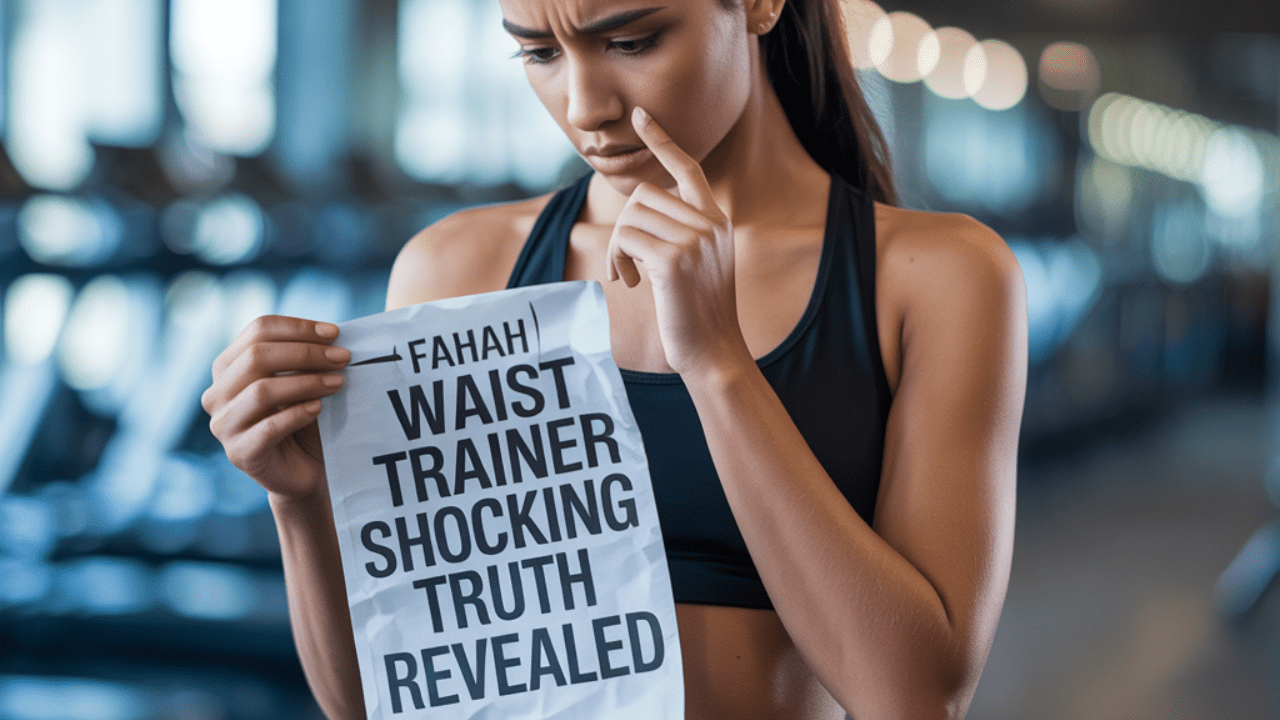The fitness and fashion industries in the United States have seen countless trends rise and fall, but few have garnered as much attention as the Fahah waist trainer. Touted as a tool to help achieve an hourglass figure and support posture, this product has captured the curiosity of millions. However, understanding whether the hype matches the results requires digging deeper into its origins, science, and real-life user experiences. By exploring research, expert opinions, and lifestyle contexts, this article offers a balanced look at the Fahah waist trainer and its place in modern wellness culture.
The Origins of Waist Training
Waist training is not a new concept. Historically, corsets were used as far back as the 16th century to shape the waist and lift posture. The Fahah waist trainer, however, reimagines this tradition by offering a more comfortable, flexible, and fitness-oriented version. Unlike rigid corsets, these trainers are designed with breathable fabrics and compression technology, making them appealing to consumers seeking both aesthetics and utility.
How the Fahah Waist Trainer Works
At its core, the Fahah waist trainer functions through compression. When worn, it pulls in the midsection, creating the immediate appearance of a slimmer waistline. Additionally, some fitness enthusiasts claim it helps support the back during workouts. Transitioning from a simple fashion item to a workout accessory, this product promises versatility.
However, long-term changes in waist size remain a point of debate. Scholars have highlighted that while temporary shaping is undeniable, sustained changes often require lifestyle modifications such as exercise and nutrition (Smith, 2020, Journal of Fitness Studies).
Expert Insights on Waist Training
Medical and fitness experts emphasize the importance of moderation. Dr. Angela Martinez, a sports medicine specialist, explains: “Waist trainers like Fahah can provide posture support and aesthetic appeal, but they should never replace consistent exercise and proper nutrition. Overuse may lead to discomfort or breathing restrictions.”
This perspective highlights that waist trainers are better viewed as supplements to a healthy lifestyle rather than miracle solutions.
Popularity in Celebrity Culture
One reason the Fahah waist trainer gained prominence in the U.S. is its endorsement by celebrities and influencers. Pop culture icons often showcase their fitness routines on social media, sparking interest among fans. This blend of fashion and wellness appeals to those who want quick results while maintaining a stylish edge.
Benefits of Using a Fahah Waist Trainer
For many, the benefits of a Fahah waist trainer extend beyond shaping the waistline. Users frequently mention improved posture, enhanced confidence, and increased motivation to pursue fitness goals. When used during workouts, it may serve as a reminder to engage the core muscles.
Additionally, the psychological boost of looking slimmer can translate into greater self-esteem, encouraging healthier habits in the long run.
Limitations and Potential Risks
Nevertheless, consumers should be cautious. Prolonged or excessive use can lead to discomfort, restricted breathing, or even weakened abdominal muscles. Transitioning responsibly between wearing the trainer and incorporating core-strengthening exercises ensures better results without negative consequences. Academic studies further caution against believing that waist trainers alone can burn fat (Johnson, 2019, American Journal of Health & Fitness).
A Lifestyle Choice, Not a Shortcut
Ultimately, the Fahah waist trainer reflects the intersection of fashion, lifestyle, and fitness. It offers short-term visual enhancement and confidence, yet its effectiveness depends heavily on how individuals integrate it into broader wellness practices. Much like other health and beauty products, the results vary significantly depending on personal commitment.
Conclusion
The Fahah waist trainer is more than just a trending accessory—it symbolizes the modern pursuit of beauty, fitness, and self-expression. While it provides undeniable aesthetic benefits and posture support, it is not a substitute for consistent exercise and mindful eating. As experts advise, using it in moderation ensures that it becomes an empowering tool rather than a harmful crutch.






Pingback: 5 Benefits of MassageViper – new session with a super fit blonde
Pingback: Otto Waalkes: Das Vermögen der Kult-Komiker - FASHIONABLE STYLE